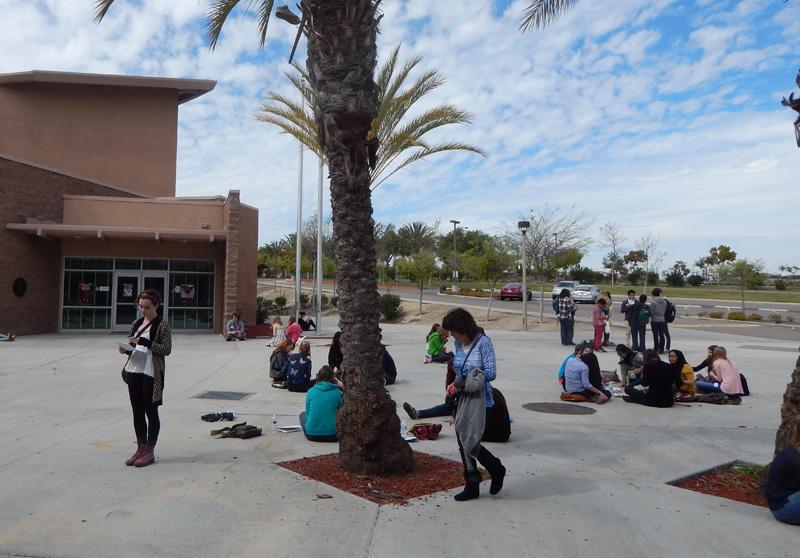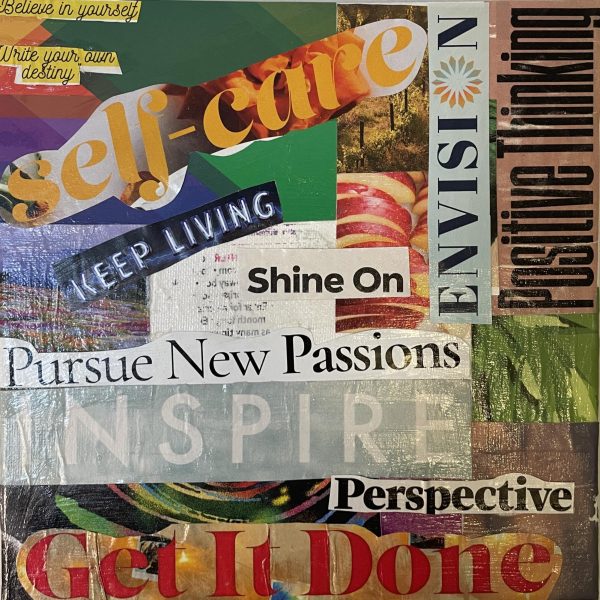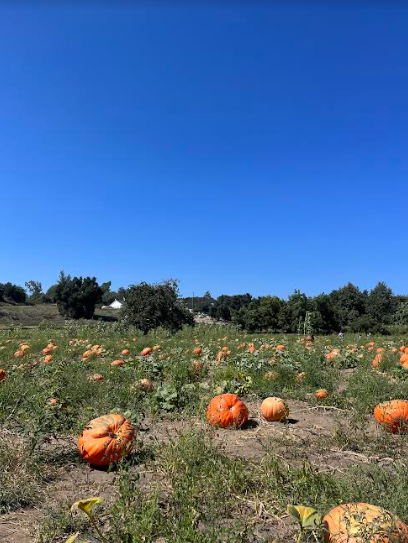The Canyon Crest Academy Writers Conference: Part 2
“I am dorkily excited that there are kids that already recognize that they want to be writers,” keynote speaker Kristin Elizabeth Clark starts the fourth annual Canyon Crest Academy Writers Conference, Saturday Feb. 22nd.
The CCA Writers Club hosted their teen writer’s conference, complete with keynote speakers, workshops, supplied notebooks and a free lunch. Read through for the highlights and schedule for next year to experience yourself the only free teen writer’s convention in the nation.
“I dare you to scare me”
“The Land of Nod” author explains how to horrify the reader, even the nonbelievers.
Mark Clements – “Blood Work: A Horror and Suspense Workshop”
Written by Katrina Olsen
Horror writer Mark Clements revealed all of the tricks of the trade in his “Blood Work: A Horror and Suspense Workshop.”
While reading through a short horror story where two boys are murdered in a haunted treasure cave, Clements outlined the transitions of suspense (where the reader wonders, “What’s going to happen?”) to terror (an instantaneous moment of screaming, that-head-isn’t-attached . . . terror) then right on to the horror (the lingering unease that keeps you from sleeping for a month).
Each stage is made all the more real with special devices like appealing to phobias, having a “ticking clock” to the situation, and even “disassembled things that are normally assembled like . . . people,” said Clements. All work together to create a story that keeps the reader reading . . . even if he or she may not really want to.
“I didn’t want to be part of someone else’s story; I wanted to tell my own”
“James Morgan and the King of Thieves” author describes how to write your own “Fast and Furious” action scenes.
James Raney – Fast and Furious: Writing Great Action Scenes
Written by Kate Sequeria
With a bundle of enthusiasm bubbling up inside, author James Raney took the stage. He dove right to the point and began speaking of the inner workings of action scenes. As an author of the middle grade fantasy and adventure series, “James Morgan and the King of Thieves,” he knew how to take an action scene and dial it down to simplicity.
His definition of an action scene was a scene that moves the story along. He discussed the uses of action scenes explaining that they could be used in many different ways including to break up dialogue or to create a resolution.
Raney described the scenes mentioning that there must always be a conflict or an obstacle to test the hero and consequences for the choices made. He made sure that it was understood that the main character must always be involved in the action and that it wasn’t necessary for a character to always pass the obstacles that it comes across.
He also spoke of his inspiration to write saying, “I just have always really loved stories and I actually started out when I got into a little bit of acting in high school. I realized part of the way through that I didn’t want to be part of someone else’s story; I wanted to tell my own.”
“The most important thing with writing a story is just falling in love with it”
“The Knife’s Edge” author reveals the secrets in creating great fantasy worlds.
Matt Wolf – Grand World Building in Fantasy
Written by Kate Sequeria
According to self-published author Matt Wolf, “The most important thing with writing a story is just falling in love with it; just really being completely immersed into your own characters and in your own world. If you don’t love your own story how is anyone else going to?”
Wolf spoke about the different ways to build a world saying that it is possible to start with anything; a world can be built with simply the image of a land in mind in the beginning. He explained that there were questions needed to be answered about the worlds such as “What is unique about it? How does it relate to the character?”
He stressed the importance of feeling the scenes when writing them the same way the reader would feel them and suggested talking about the world and the story with friends to get feedback and to hear the ideas out loud. Wolf also mentioned that having an eye for what draws the readers in without rambling on for too long was a key factor.
“You need to pick out the imperfect character”
“Mulberry Park” author teaches how to write real romance.
Kiss and Tell: Writing Romance- Judy Duarte
Written by Hana Chen
As groups of students wandered into the classroom, author Judy Duarte greeted the bunch with a crisp enthusiasm and an inviting smile. At one small glance anyone could tell that she was a jolly lady; she chuckled often and her eyes crinkled with elation as she did.
She started out by reading everyone a children’s book called “The Paper Bag Princess” and then proceeded to work with all the workshop attendees to create a real romance novel out of it. She explained how nobody wants to read about someone that is perfect; the main character has to have physical or emotional wounds.
Duarte said, “You need to pick out the perfect imperfect character.”
She continued talking to the class about how in a typical romance novel there are two basic protagonists who are attracted to each other but have conflicting goals. Both characters must arc, or change, over the course of the book so they can end up together.
Duarte also emphasized that the first page of a book must draw the readers in and make them want to read the book, but the last page of a book must satisfy the readers and make them want to read the next book the author is writing.
Duarte has written over 30 romance novels and has won many awards, including the prestigious Reader’s Choice Award.
The apples of her cheeks blushing, she said, “I am a hopeless romantic.”











